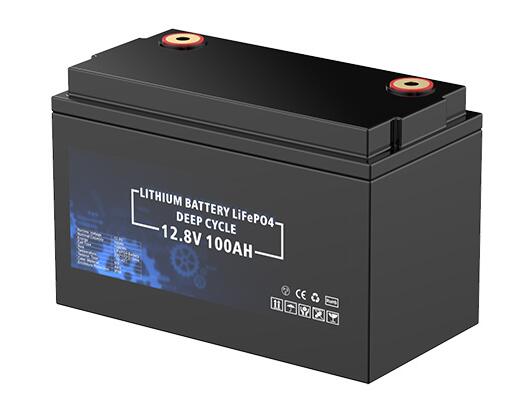Battery diagnostics and checking have not progressed as quickly as the battery business wants however steady advancement is being made. Batteries are mind-boggling monsters and test strategies should recognize the low charge and blurred limit, side effects that are diverse to the outside yet have comparable diagnostics characteristics. Battery qualities additionally change subsequent to charging and delayed stockpiling.
Capacity is the main well-being marker that decides the finish-of-battery-life. A starter battery ought to be supplanted when the limit dips under 40%. With the obstruction-based technique, the limit is obscure, and numerous batteries might be supplanted on a bogus supposition. There is additional protection from supplanting a battery that actually wrenches, however, is perilously coming up short on the limit. A battery doesn't
pass on abruptly yet runs out of the limit, and this happens generally during a virus spell. Driving with a terminated battery resembles a consumed span that had been shut to traffic yet at the same time stands.
The wellbeing of a battery can't be "estimated," just assessed. Similar to a specialist looking at a patient, or the meteorologist anticipating the climate, battery test results are just expectations identifying with
condition-of-wellbeing and end-of-life. A dead battery is not difficult to anticipate and most analyzers give 100% exactness. The test comes when estimating a functioning battery in the 70–100% limit range. Other
than the limit, different qualities additionally come to play, and these are inside opposition, sulfation, and self-release. No single gadget can evaluate all battery qualities in a short test on the fly. One of the early
battery analyzers was the carbon heap. The battery passes assuming the voltage stays over a set limit with a heap applied for a given time frame. The carbon heap test reflects exact conditions and a gifted expert
can accomplish a sensibly decent assessment, be that as it may, the gadget can't recognize the low charge, high inside opposition, and loss limit.
Single recurrence AC analyzers infuse a 1000-hertz sinusoidal sign or square wave beats of 80–90 Hertz. These non-intrusive techniques work on a scalar level by contrasting information from a solitary reference point
and estimating the inward obstruction.
Different frequencies have been attempted, however, the purported vector technique just adds to intricacy without huge improvement. The limit assessment stays far off.
Battery researchers accept that the fate of battery testing lies in electrochemical impedance spectroscopy (EIS).
EIS has been around for a long time however high gear cost, long test times and the requirement for prepared specialists to translate information have kept this innovation in research facilities.
Clients will request better capacity forecasts and upgrades in frameworks will accomplish this to some extent. The client should see the value in that a battery shortcoming must be analyzed assuming quantifiable pointers are available. For obscure reasons, reversible (delicate)sulfation doesn't show discernible indications and the battery gets a physician's approval. Just long-lasting (hard) sulfation that can presently don't be rectified
concurs with the outcome. An equal can be made with a special patient condition that challenges clinical instruments.
Likewise, with every single progressed framework, Spectro™ requires foundation and these are lattices, otherwise called design acknowledgment calculation. A framework is a multi-dimensional query table against
which readings are looked at. Text acknowledgment, unique mark ID, and visual imaging work on a comparative guideline. Cadex is in the process of assembling a network library that incorporates different battery
types.
Nonexclusive networks are generally pragmatic as these assist a wide scope of batteries by arranging on a capacity edge.
Li-ion starter batteries are currently being advertised and advised. Their small size and lightweight are striking. That's why HOUNY has specifically developed and launched a series of car start-stop batteries that use automotive-grade lithium iron phosphate batteries and a built-in intelligent battery management system (BMS).

12.8V 100Ah 1280Wh Deep cycle battery pack
Quality lithium-ion batteries are safe if used as intended. However, statistics showed high rates of heat and fire accidents had been reported in consumer products that use non-certified batteries. That's why HOUNY
utilizes LiFeO4 batteries which are the safest lithium battery type currently available on the market today — 100% safe, non-toxic, and renewable energy. Compared to the 200-500 cycles and 3-year life of lead-acid batteries, HOUNY's rechargeable batteries provide more than 4,000 cycles (10 times longer)and a 10-year life. This is 2000-3000 cycles longer than other LiFePO4 batteries on the market.
Lithium-ion deep cycle batteries are manufactured using automotive-grade lithium iron phosphate batteries, which offer superior quality due to higher energy density, more stable performance, and more power.
With overcharge, over-discharge, overcurrent and short-circuit protection, and a high self-discharge rate. A lithium-ion deep cycle battery has a capacity of up to 300Ah, low self-discharge rate, low capacity loss, and is 40% stronger than lead-acid batteries of the same size (lead-acid batteries have a depth of discharge of about 60%.
For more inquiries:
ABOUT HOUNY
Website: www.hounypower.com
Telephone: +86 755 8399 4783
Email: market@houny.cn
Mobile: +86 138 2313 0291
Copyright © Shenzhen Houny Battery Co., Ltd. All Rights Reserved | Sitemap | Technical Support:
